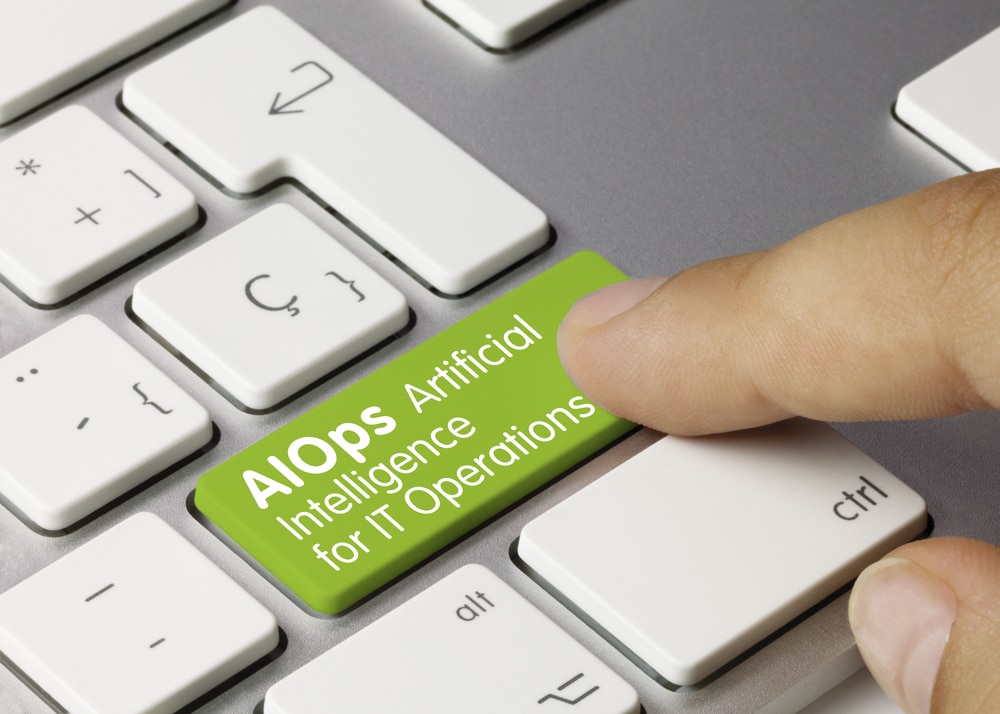
Managing spending is the biggest cloud challenge
For the second year running managing cloud spending is the top challenge facing organizations, according to the latest Flexera State of the Cloud Report.
The survey of over 750 respondents shows more than a quarter of them spend over $12 million a year on cloud (29 percent), and 22 percent spend that much on SaaS.

Rising hyperscaler cloud costs prompt companies to take action
New research from Civo finds 64 percent of users of AWS, Microsoft Azure, and Google Cloud have seen an increase in cloud costs in the last 12 months.
This comes at a time when public cloud services are coming under scrutiny from the Competition and Markets Authority for their billing and pricing tactics.

AIOps models deliver limited value say tech leaders
A new study reveals that 97 percent of technology leaders find traditional AIOps models deliver limited value, leaving teams unable to tackle data overload.
The global survey of 1,300 CIOs and technology leaders in large organizations, carried out for Dynatrace, also finds that 88 percent of organizations say the complexity of their technology stack has increased in the past 12 months, and 51 percent say it will continue to increase.

3 IT industry trends defining the next era of cloud computing
I recently had the pleasure of attending a couple of industry conferences about IT infrastructure and the cloud. Every conversation buzzed with the latest trends and questions, and every panel discussion grappled with the most pressing industry challenges that everyone in the room was interested in learning more about.
These gatherings are excellent networking opportunities, and they're also real-time snapshots of what matters most in a particular field. As such, I wanted to share a few insights that I gathered from these recent events based on topics that seemed to come up again and again.

Cohesity launches gen AI search solution for business data
Businesses are dependent on data but extracting useful information in order to aid decision making, while ensuring it stays secure, can prove surprisingly difficult.
Cohesity Gaia, is the industry's first generative AI-powered conversational search assistant. Designed to help access organizations’ most important data to make smarter decisions faster, all while keeping data secure and compliant.

Companies overspend on Kubernetes thanks to underutilization of resources
Kubernetes is one of the most widely used container tools, but failure to accurately forecast resources leads to overprovision, waste and overspending.
A new report from Kubernetes automation platform CAST AI reveals high levels of underutilization are costing businesses more than necessary.

Cloud-focused malware campaigns on the increase
As commercial adoption of cloud technologies continues, cloud-focused malware campaigns have increased in both sophistication and number.
A new report from Cado Security is based on analysis of real-world techniques employed by attackers using honeypot infrastructure. Last year Cado introduced 'Cloudypots', a new, more sophisticated, high-interaction honeypot system.

Over 80 percent of organizations have open ports on public-facing cloud assets
A new report reveals that 81 percent of organizations have public-facing neglected cloud assets with open ports, making them prime targets for attackers who routinely perform reconnaissance to detect exposed ports and known vulnerabilities.
The report from Orca Security is based on analysis of data from billions of cloud assets on AWS, Azure, Google Cloud, Oracle Cloud, and Alibaba Cloud scanned by the Orca Cloud Security Platform in 2023.

21 new malware families for Mac systems discovered in 2023
Apple devices have historically had a reputation for being immune to malware, but a new report from Jamf reveals that it's tracked 300 malware families on macOS and found 21 new ones in 2023.
Jamf's latest Security 360 report examined a sample of 15 million desktop computers, tablets and smartphone devices they protect, across 90 countries and multiple platforms (macOS, iOS/iPad, Android and Windows).

Cyberattacks follow businesses to the cloud
Cloud intrusions increased by 75 percent overall last year as adversaries set their sights on the cloud through the use of valid credentials.
This is one of the findings of the 2024 CrowdStrike Global Threat Report released today. It notes an increase in interactive intrusions and hands-on-keyboard activity (60 percent) as adversaries increasingly exploit stolen credentials to gain initial access at targeted organizations.

Managing multi-cloud complexity: Frameworks to adopt, pitfalls to avoid, and strategies to bring it all together
As many companies are discovering, a multi-cloud environment can offer improved workload portability, purchasing power and increased innovation velocity, as well as other significant benefits. However, managing a multi-cloud environment can be challenging. From complex integrations to fragmented cost visibility to security and compliance concerns, today’s tech leaders can become overwhelmed.
Competing organizational interests, lack of expertise, and unexpected or hidden costs can detract from the great promise of a multi-cloud environment. Organizations need the right people, processes, and tools to overcome the challenges and realize the rewards.

Get 'The Self-Taught Cloud Computing Engineer' (worth $35.99) for FREE
The Self-Taught Cloud Computing Engineer is an all-inclusive guide for IT professionals to master cloud computing concepts by building a broad and deep cloud knowledge base, developing hands-on cloud skills, and achieving professional cloud certifications.
If you’re a beginner with basic computer hardware and software understanding, this book provides the means to transitions into a cloud computing career. Starting with a focus on the Amazon cloud, you’ll be introduced to fundamental AWS cloud services, followed by advanced AWS cloud services in the domains of data, machine learning, and security.

Get 'Enterprise AI in the Cloud: A Practical Guide to Deploying End-to-End Machine Learning and ChatGPT Solutions' (worth $48.99) for FREE
Enterprise AI in the Cloud is an indispensable resource for professionals and companies who want to bring new AI technologies like generative AI, ChatGPT, and machine learning (ML) into their suite of cloud-based solutions.
If you want to set up AI platforms in the cloud quickly and confidently and drive your business forward with the power of AI, this book is the ultimate go-to guide.

91 percent of organizations experience software supply chain incidents
The overwhelming majority of organizations (91 percent) have experienced a software supply chain incident in the past 12 months, according to a new report.
The study from Data Theorem and the Enterprise Strategy Group surveyed over 350 respondents from private- and public-sector organizations in the US and Canada across cybersecurity professionals, application developers and IT professionals.

From complexity to clarity: Managing IT landscapes in a hybrid cloud world
IT plays a key role in achieving sustained business success against a backdrop of constantly changing industry and economic challenges. Today’s IT systems not only underpin business operations but enable the projects and initiatives that deliver on every aspect of a company’s business strategy.
Over the last five years, there has been a significant transformation in the business systems and IT landscapes that IT teams are required to manage. The COVID 19 pandemic played a large role in this shift, with businesses having to rapidly incorporate new capabilities to facilitate remote work and maintain daily operations. Over time, these ‘temporary solutions’, plus others that have been implemented since, have become embedded in many organizations.
